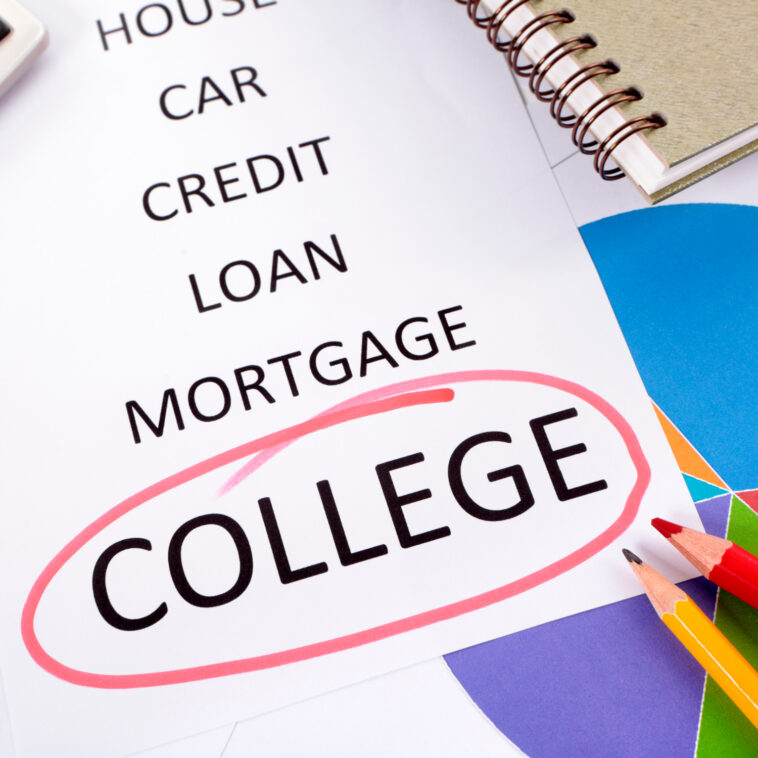For many college graduates, the dream of a higher education often comes with the harsh reality of student loan debt. The burden of repaying these loans can loom over their lives for years, hindering their ability to achieve financial milestones and pursue their dreams. However, there is a glimmer of hope for those struggling under the weight of student loans – student loan forgiveness. In this article, we will explore the concept of student loan forgiveness, the different forgiveness programs available, eligibility criteria, and the potential impact on borrowers’ lives.
Understanding Student Loan Forgiveness
Student loan forgiveness is a program that relieves borrowers of their obligation to repay a portion or all of their student loans. It is a lifeline for graduates facing financial hardships and serves as an incentive for individuals pursuing careers in certain public service and nonprofit sectors.
1. Public Service Loan Forgiveness (PSLF)
The Public Service Loan Forgiveness program was created to support individuals working in qualifying public service jobs. To be eligible for PSLF, borrowers must make 120 qualifying monthly payments while working full-time for a qualifying employer. After meeting these criteria, the remaining balance on their Direct Loans may be forgiven.
2. Teacher Loan Forgiveness
Teacher Loan Forgiveness is designed to incentivize individuals to pursue careers in education. Teachers who work full-time for five consecutive years in low-income schools or educational service agencies may be eligible for loan forgiveness up to a specific amount, depending on their subject area and qualifications.
3. Income-Driven Repayment (IDR) Forgiveness
Income-Driven Repayment plans adjust borrowers’ monthly loan payments based on their income and family size. After making payments for 20 or 25 years (depending on the plan), the remaining balance may be forgiven. However, the forgiven amount is considered taxable income in the year of forgiveness.
4. Perkins Loan Cancellation
Perkins Loan Cancellation is available for individuals working in specific professions, such as teaching, nursing, and law enforcement. A certain percentage of the loan is canceled for each year of qualifying service, up to 100% of the loan balance.
Eligibility for Student Loan Forgiveness
Eligibility for student loan forgiveness depends on various factors, including the type of loan, the repayment plan, and the borrower’s occupation. Here are some essential considerations:
1. Type of Loans
Generally, federal student loans, such as Direct Loans and Perkins Loans, are eligible for forgiveness programs. Private loans are not eligible for federal loan forgiveness options.
2. Repayment Plan
Income-Driven Repayment plans are often linked to loan forgiveness. Borrowers must be on one of these plans and make qualifying payments for the specified period to be eligible for forgiveness.
3. Qualifying Employment
Many forgiveness programs require borrowers to work in specific sectors or job roles. Public service, teaching, healthcare, and nonprofit organizations are some of the common fields that offer loan forgiveness options.
4. Timely Payments
Consistent and timely payment is crucial for loan forgiveness eligibility. Missing payments or deferring loans during the qualifying period may reset the forgiveness timeline.
The Impact of Student Loan Forgiveness
Student loan forgiveness can have a profound impact on borrowers’ lives, providing them with much-needed financial relief and the ability to focus on their future goals:
1. Debt Relief
One of the most apparent benefits of loan forgiveness is the immediate relief from debt. Graduates burdened by student loans can breathe a sigh of relief, as their loan balances may be significantly reduced or entirely forgiven.
2. Career Choices
Student loan forgiveness programs often incentivize individuals to pursue careers in public service or other eligible fields. Graduates can follow their passion and contribute to their communities without being weighed down by the fear of unmanageable debt.
3. Economic Impact
Reducing student loan debt through forgiveness can have positive implications for the economy. Borrowers are likely to have more disposable income, which can boost consumer spending and stimulate economic growth.
4. Financial Freedom
Student loan forgiveness can provide borrowers with the opportunity to achieve financial freedom earlier in their lives. They can invest in their future, save for homeownership, or start a family without the constraints of overwhelming debt.
Applying for Student Loan Forgiveness
Applying for student loan forgiveness requires careful attention to detail and adherence to program-specific requirements. Here are some steps to guide borrowers through the application process:
1. Understand the Program Requirements
Familiarize yourself with the specific requirements of the forgiveness program you intend to apply for. Each program has different eligibility criteria and documentation requirements.
2. Keep Detailed Records
Maintain detailed records of your loan payments, employment history, and any supporting documentation required for forgiveness. This documentation will be crucial when submitting your forgiveness application.
3. Submit the Application Timely
Submit your forgiveness application as soon as you become eligible. Avoid delaying the process, as forgiveness programs may have a limited funding pool or specific application deadlines.
4. Seek Professional Guidance
If you’re unsure about the application process or your eligibility, seek guidance from a student loan counselor or your loan servicer. They can assist you in understanding your options and navigating the application process smoothly.
Conclusion
Student loan forgiveness offers a glimmer of hope for college graduates burdened by the weight of student debt. These programs provide much-needed financial relief, incentivize career choices, and have a positive impact on borrowers’ lives. If you believe you may be eligible for student loan forgiveness, research the specific programs available, understand the eligibility criteria, and take the necessary steps to apply. Remember, student loan forgiveness is not only a beacon of hope but a testament to the value society places on education and the dedication of individuals serving the greater good.
Embrace the opportunity for debt relief and financial freedom as you pave the way for a brighter future with student loan forgiveness.



